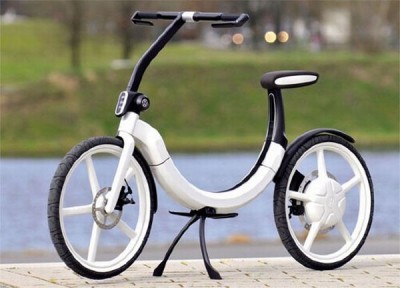
Why are so many auto makers jumping into the e-bike arena? BMW, Lexus, and Volkswagon, have all shown an interest in selling e-bikes. Volkswagon’s e-bike is made to complement the car. It folds up into the trunk of a VW, where it can also be recharged. Daimler intends to start selling e-bikes in the U.S. next year to get a head start on the other auto manufacturers.
Apparently, a trend has developed in the auto industry of trying to appear more green. On some level, this allows them to clean up their image as producers of gas guzzling, polluting vehicles. But, on another level, their industry is based on profit, not environmentalism.
In places like China, where the number of e-bikes is estimated to be as high as 120 million, e-bikes sales represent big money. Demand for e-bikes is also growing in Europe where cycling is used for transportation more than in the U.S. Such markets may have attracted auto manufacturers because the lower demand for cars has caused them to look for other ways to turn a profit.
Although several brands of e-bikes have been introduced in the U.S., the market is small, with little evidence of a trend emerging.
The two main drivers behind the growth of e-bike popularity are high gas prices and demand for human powered transportation without the sweat that comes from exertion. Most of the e-bikes marketed today require the rider to pedal to start the motor, resulting in some effort on the part of the rider and an opportunity for exercise. A few models, which are especially popular in China, are powered solely by a motor and are more like scooters.
Pedal assist e-bikes are particularly well suited for people who are not fit enough to ride a regular bicycle. Some people, such as those with injuries or health problems, would not be able to ride a bike on challenging terrain without motor assistance . While this group is the most likely to want e-bikes, many fit people may be attracted by the gas saving and environmental benefits of using an e-bike over a car. But, even with growing interest in greener options for transportation, there may not be enough demand in the U.S. for companies to sell e-bikes here.
Regardless of demand, it seems odd to see auto makers taking such an interest in bicycles. It’s unclear why they perceive themselves as capable of creating and marketing a vehicle so outside of their area of expertise.
A company with prior knowledge of and experience with bicycles might be in a better position to understand how people use bikes. This knowledge could serve as a basis for creating more user-friendly designs and lead to a better marketing strategy.
Further, the goals of automotive engineering and bicycle engineering are very different. A car is designed to carry passengers and cargo. And, mechanically, it is much more complex than a bicycle. Many of the concepts presented by the auto manufacturers reflect auto engineering style. For this reason, they are aesthetically pleasing, but impractical. The designers seem to have focused more on making the e-bikes futuristic than functional.
As fun as these e-bikes are to look at, and marvel over, it’s hard to imagine their target market. A high-end consumer looking for a diversion might be more attracted to these designs than someone seeking a less expensive way to commute to work.
Auto manufacturers go where the profits are. Their leap into the e-bike market might represent recognition of a new trend – that of consumers moving away from cars. The question is: will that trend translate into greater acceptance of bicycles for transportation?
Even though motorists are sometimes a cyclist’s enemy, if bicycles were manufactured by the same companies as cars, an affinity could develop between the two vehicles. And, ultimately harmony could be attained between riders of two-wheeled vehicles and drivers of four-wheeled vehicles.
It would be interesting to see the effect of having cars and e-bikes displayed side-by-side on an auto dealer’s showroom floor. This would force drivers and cyclists, who are always at odds on the road, to shop together for their respective vehicles. Maybe such an arrangement would alter the perceptions of the car-centric among us. If drivers’ favorite car brands featured e-bikes in showrooms and advertisements, they might begin to see bicycles – at least those with motors – as more equal to cars.
The best part of having auto makers involved in the production of e-bikes would be the trickle down effect this could have on non-electric bicycles. Automotive industry production of two-wheeled vehicles would give them credibility beyond anything cycling advocates could hope to achieve.
Still, auto makers do not care about making bicycles more acceptable or more prevalent. Their goal is to create a new market and a new source of revenue. Whatever benefits cyclists derived from their efforts would be circumstantial.
It remains to be seen whether Americans will follow the lead of other countries and adopt e-bikes for transportation. If more of them do, a fierce competition will ensue between auto makers and dedicated e-bike companies to corner that market. A rise in the number of two-wheeled vehicles on the road, some with familiar auto brand names on them, can make bicycles seem less out of place and more commonplace.


